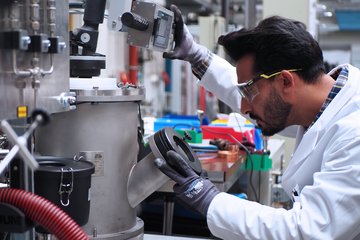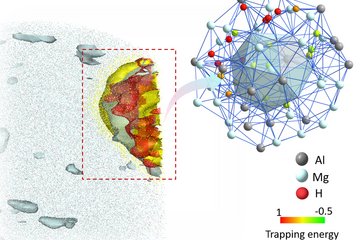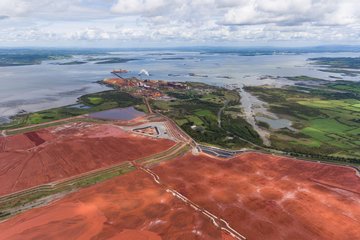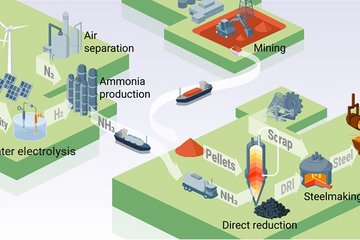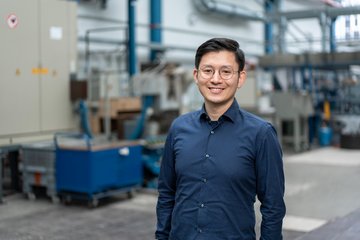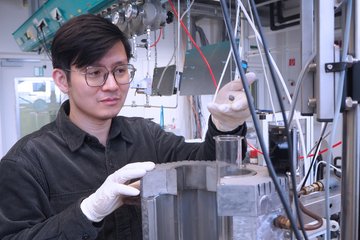Alle Typen
41.
Zeitschriftenartikel
Effect of ordering of PtCu3 nanoparticle structure on the activity and stability for the oxygen reduction reaction. Physical Chemistry Chemical Physics 16 (27), S. 13610 - 13615 (2014)
42.
Zeitschriftenartikel
Shear-induced mixing governs codeformation of crystalline-amorphous nanolaminates. Physical Review Letters 113 (3), 035501 (2014)
43.
Zeitschriftenartikel
Crystallization, phase evolution and corrosion of Fe-based metallic glasses: an atomic-scale structural and chemical characterization study. Acta Materialia 71, S. 20 - 30 (2014)
44.
Zeitschriftenartikel
Enhanced Quantum Confined Stark Effect in a mesoporous hybrid multifunctional system. Solid State Communications; Pergamon, New York 187, S. 48 - 52 (2014)
45.
Zeitschriftenartikel
Interaction of cobalt nanoparticles with oxygen- and nitrogen- functionalized carbon nanotubes and impact on nitrobenzene hydrogenation catalysis. ACS Catalysis 4 (5), S. 1478 - 1486 (2014)
46.
Zeitschriftenartikel
Long-term microstructural stability of oxide-dispersion strengthened Eurofer steel annealed at 800°C. Journal of Nuclear Materials 448 (1-3), S. 33 - 42 (2014)
47.
Zeitschriftenartikel
Structural and functional characterization of enamel pigmentation in shrews. Journal of Structural Biology 186 (1), S. 38 - 48 (2014)
48.
Zeitschriftenartikel
Nanoscale understanding of bond formation during cold welding of aluminum and steel. Advanced Materials Research 966-967 , S. 445 - 452 (2014)
49.
Zeitschriftenartikel
The structural and electronic promoting effect of nitrogen-doped carbon nanotubes on supported Pd nanoparticles for selective olefin hydrogenation. Catalysis Science & Technology 3 (8), S. 1964 - 1971 (2013)
50.
Zeitschriftenartikel
Grain boundary segregation in a bronze-route Nb3Sn superconducting wire studied by atom probe tomography. Superconductor Science and Technology 26, S. 055008-1 - 055008-7 (2013)
51.
Zeitschriftenartikel
Simple synthesis of superparamagnetic magnetite nanoparticles as highly efficient contrast agent. Materials Letters 95, S. 186 - 189 (2013)
52.
Zeitschriftenartikel
Differential tunability effect on the optical properties of doped and undoped quantum dots. Physica Status Solidi (A) 209 (8), S. 1543 - 1551 (2012)
53.
Zeitschriftenartikel
On the Correlation Between Thermal Cycle and Formation of Intermetallic Phases at the Interface of Laser-Welded Aluminum-Steel Overlap Joints. Advanced Engineering Materials 14 (7), S. 464 - 472 (2012)
54.
Zeitschriftenartikel
Degradation Mechanisms of Pt/C Fuel Cell Catalysts under Simulated Start−Stop Conditions. ACS Catalysis 2 (5), S. 832 - 843 (2012)
55.
Zeitschriftenartikel
Synthesis of titanium carbonitride coating layers with star-shaped crystallite morphology. Materials Letters 68, S. 71 - 74 (2012)
56.
Zeitschriftenartikel
Friction-stir dissimilar welding of aluminium alloy to high strength steels: Mechanical properties and their relation to microstructure. Materials Science and Engineering A 556, S. 175 - 183 (2012)
57.
Zeitschriftenartikel
Direct monophasic replacement of fatty acid by DMSA on SPION surface. Applied Surface Science 258, S. 9685 - 9691 (2012)
58.
Zeitschriftenartikel
Stability investigations of electrocatalysts on the nanoscale. Energy & Environmental Science 5 (11), S. 9319 - 9330 (2012)
59.
Zeitschriftenartikel
Thermal stability of TiAlN/CrN multilayer coatings studied by atom probe tomography. Ultramicroscopy 111, S. 518 - 523 (2011)
60.
Zeitschriftenartikel
Size and size distribution of apatite crystals in sauropod fossil bones. Palaeogeography, Palaeoclimatology, Palaeoecology 310, S. 108 - 116 (2011)
